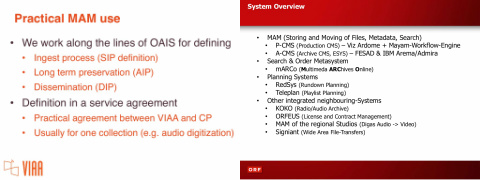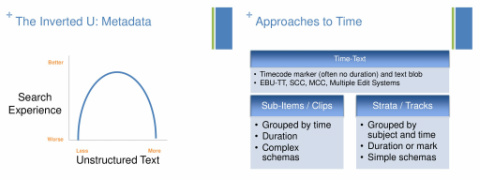FIAT/IFTA MMC Seminar 2015 in Glasgow

Setting the standard in 2nd generation MAM systems and metadata
A comment from a Media Access Manager perspective
A Media Access Manager at Sound & Vision in the Netherlands is a documentalist and researcher. Since January 2015 Sound & Vision relies heavily on external sources and automatic techniques for the basic metadata of newly acquired content, predominantly television and radio programmes from public broadcasters. As a Media Manager Access I add metadata that is not otherwise captured but essential in distinguishing extraordinary items, programmes or shots. For example, the king and queen posing for a selfie during their visit to the United States, an award-winning programme or a beautiful goal. Doing research for both internal (our Experience and different internet sites like in.beeldengeluid.nl) and external clients helps me to stay informed about what metadata is needed to keep the most valuable content accessible.
First day: MAM day
Sound & Vision is currently in the process of acquiring a new MAM to replace the current one. As my colleagues Cor van Veen en Ingrid Veenstra have pointed out in their presentation “Transition from One MAM to the Next and From the Traditional Archivist to Media Manager - How the Two Transitions Reinforce Each Other”, using the cauliflower as a metaphor, the current MAM at Sound & Vision has quality and performance issues due to the constant addition of new functionalities.
With a mixture of both jealousy and admiration, I saw the presentations of our neighbours VIAA and the Austrian ORF, both presenting a MAM with a simple, clear and well-devised architecture. The ORF has a special License and Contract Management tool connected to their MAM and a simple user interface because, according to the ORF, ‘journalists like it simple’.

The survey conducted by FIAT/IFTA and the discussion started by Eugenio Lopez de Quintana Saenz of the Atresmedia Group were also very interesting on the first day of the seminar. He simply asked the question why standard systems don’t meet obvious demands of the archives. A provocation of both archives and MAM suppliers. Are broadcasters really that unique? Is there a need for librarians on the staff of the industry? Is it really the workflows that distinguish one archive from another? Or, in the words of TRT, is it the user who wants new functionalities and old interfaces? One advice from TFO: do not lose sight of requirements.
Second day: Metadata day
Because Sound & Vision is at the moment working on replacing iMMix with a new MAM, the first day of the seminar would have been interesting for any of my colleagues at the institute. Being a Media Access Manager I am especially interested in the second day when other archives shared their experiences with different methods of harvesting all kinds of metadata. And an interesting second day it was.

One of the final speakers, Theo Mäusli of SGR SSR, envisages our role as archivists in 2020. We, archivists, have to teach/train the system (data mining, artificial intelligence), we have to train the user and keep the system fit. Finally he concludes that we as an archive are not that special. There’s need (cost reduction) and scope for standardization. Which brings us back to the conclusion of the first day.
Let me finish by adding some interesting links:
